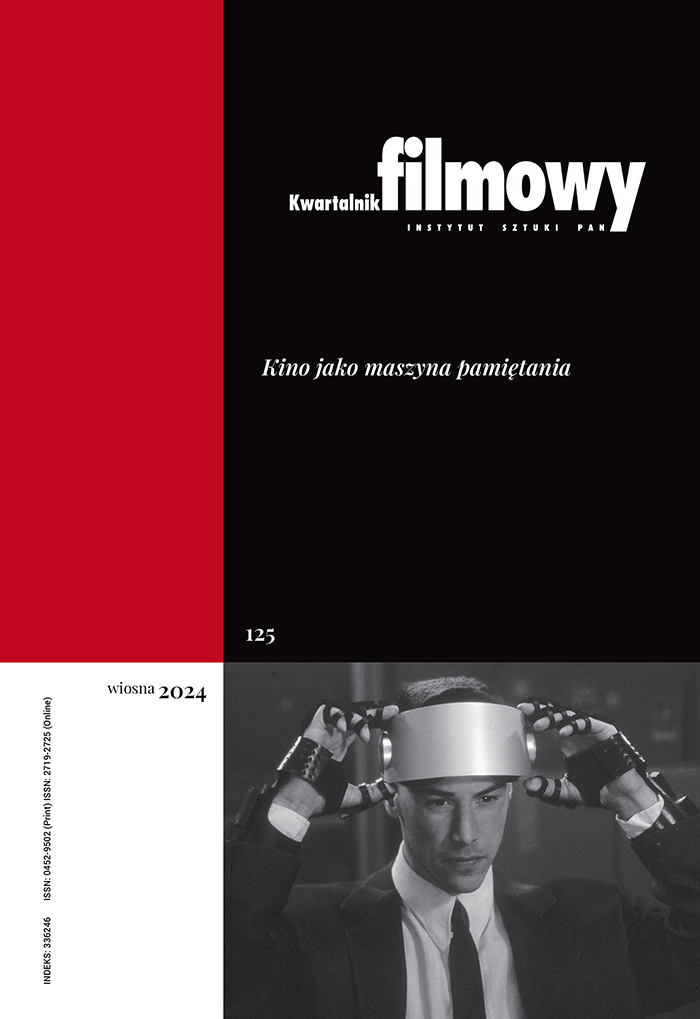The World in Our Hands: On the Animations From the “Lego Jurassic World” Series
Matylda Szewczyk
mszewczyk@uw.edu.plUniversity of Warsaw (Poland)
https://orcid.org/0000-0002-5029-3935
Abstract
This article is a reflection on the animations of the Lego Jurassic World series, part of the Jurassic Park franchise. The analysis is undertaken in the context of the subject and significance of live-action films about dinosaurs resurrected thanks to futuristic science (to which the animations refer in the storyline), but also in relation to the cultural role of Lego bricks and the problem of representation, which in this case is particularly complex. The discussion of individual issues is accompanied by a reflection on the way in which childhood is understood in contemporary culture, in the face of its characteristic fascinations and anxieties.
Keywords:
Lego, animation, dinosaurs, children’s culture, science fiction, playReferences
Benjamin, W. (1996). Dzieło sztuki w dobie reprodukcji technicznej (tłum. J. Sikorski). W: W. Benjamin, Anioł historii: eseje, szkice, fragmenty (red. H. Orłowski, ss. 201-239). Poznań: Wydawnictwo Poznańskie.
Google Scholar
Franklin, S. (2000). Life Itself: Global Nature and the Genetic Imaginary. W: S. Franklin, C. Lury, J. Stacey, Global Nature, Global Culture (ss. 188-227). London – Thousand Oaks – New Delhi: Sage Publications Ltd.
DOI: https://doi.org/10.4135/9781446219768.n7
Google Scholar
Gaarder, J. (2020). Świat Zofii. Podróż w głąb historii filozofii (tłum. I. Zimnicka). Warszawa: Czarna Owca.
Google Scholar
Gauntlett, D. (2014). The LEGO System as a Tool for Thinking, Creativity, and Changing the World. W: M. J. P. Wolf (red.), LEGO Studies: Examining the Building Blocks of a Transmedial Phenomenon (ss. 189-205). New York: Routledge.
Google Scholar
Hains, R. C., Mazzarella, S. R. (2019). „Let There Be LEGO!”: An Introduction to „Cultural Studies of LEGO”. W: R. C. Hains, S. R. Mazzarella (red.), Cultural Studies of LEGO: More Than Just Bricks (ss. 1-20). Cham: Palgrave Macmillan.
DOI: https://doi.org/10.1007/978-3-030-32664-7_1
Google Scholar
Janko, A. (2007). Dziewczyna z zapałkami. Warszawa: Wydawnictwo Nowy Świat.
Google Scholar
Kempner, B. (2014). Feathering the Truth. W: N. Michaud, J. Watkins (red.), Jurassic Park and Philosophy: The Truth Is Terrifying (ss. 111-120). Chicago: Open Court.
Google Scholar
Mattes, A. (2019). Everything Is Awesome When You’re Part of a List: The Flattening of Distinction in Post-Ironic Lego Media. W: R. C. Hains, S. R. Mazzarella (red.), Cultural Studies of LEGO: More Than Just Bricks (ss. 73-95). Cham: Palgrave Macmillan.
DOI: https://doi.org/10.1007/978-3-030-32664-7_4
Google Scholar
Mitchell, W. J. T. (1998). The Last Dinosaur Book: The Life and Times of a Cultural Icon. Chicago – London: The University of Chicago Press.
Google Scholar
Mitchell, W. J. T. (2013). Dzieło sztuki w dobie reprodukcji biocybernetycznej. W: W. J. T. Mitchell, Czego chcą obrazy? Pragnienia przedstawień, życie i miłości obrazów (tłum. Ł. Zaremba, ss. 337-360). Warszawa: Narodowe Centrum Kultury.
Google Scholar
Naveau, M. (2021, 30 czerwca). „Jurassic World: Fallen Kingdom”: Linking Transhumanism and Posthumanist Anti-Speciesism in A Science Fiction Blockbuster. Academia Letters. https://doi.org/10.20935/AL1383
DOI: https://doi.org/10.20935/AL1383
Google Scholar
Pick, A. (2013). Three Worlds: Dwelling and Worldhood on Screen. W: A. Pick, G. Narraway (red.), Screening Nature: Cinema Beyond Human (ss. 21-36). New York – Oxford: Berghahn.
DOI: https://doi.org/10.2307/j.ctt9qczx4.6
Google Scholar
Authors
Matylda Szewczykmszewczyk@uw.edu.pl
University of Warsaw Poland
https://orcid.org/0000-0002-5029-3935
PhD; she specializes in media studies, film history and selected practices of contemporary visual culture (especially relations between visual culture and science). She is interested in the ways in which images both reflect and influence cultural changes, working especially within the area of reproductive medicine, images of foetal development, pregnancy, birth, and motherhood. Author of W stronę wirtualności. Praktyki artystyczne kina współczesnego [Towards Virtuality: Artistic Practices of Contemporary Cinema] (2015), co-editor of Sztuka w kinie dokumentalnym [Art in Documentary Cinema] (2016) and Cięcie ciał. Ruchome obrazy [Cutting Bodies: Moving Images] (2018). Head of the Section for Film and Visual Culture at the Institute of Polish Culture, University of Warsaw.
Statistics
Abstract views: 423PDF downloads: 284
License
Copyright (c) 2024 Matylda Szewczyk

This work is licensed under a Creative Commons Attribution 4.0 International License.
The author grants the publisher a royalty-free non-exclusive licence (CC BY 4.0) to use the article in Kwartalnik Filmowy, retains full copyright, and agrees to identify the work as first having been published in Kwartalnik Filmowy should it be published or used again (download licence agreement). The journal is published under the CC BY 4.0 licence. By submitting an article, the author agrees to make it available under this licence.
In issues from 105-106 (2019) to 119 (2022) all articles were published under the CC BY-NC-ND 4.0 licence. During this period the authors granted a royalty-free non-exclusive licence (CC BY-ND 4.0) to use their article in „Kwartalnik Filmowy”, retained full copyright, and agreed to identify the work as first having been published in our journal should it be published or used again.
Most read articles by the same author(s)
- Matylda Szewczyk, The Anxious Smile of the Medusa: Parental Identities in the First Season of “Raised by Wolves” , Kwartalnik Filmowy: No. 116 (2021): Cinema and Social Identity
- Matylda Szewczyk, Troublesome Gazes: Filmic Depictions of Non-normative Bodies , Kwartalnik Filmowy: No. 120 (2022): Film Culture
- Matylda Szewczyk, What Is Cyberculture , Kwartalnik Filmowy: No. 80 (2012): Film at the Meeting Point of Cultures
- Matylda Szewczyk, Appearing of the Bomb: Metaphysics, Aesthetics, Trauma , Kwartalnik Filmowy: No. 96 (2016): Film and Metaphysics
- Matylda Szewczyk, Examining the Cinema: The Question About the Medium in Jean-Luc Godard’s Selected Films of the Early 1980s , Kwartalnik Filmowy: No. 54-55 (2006): Film, Photography, Reality











